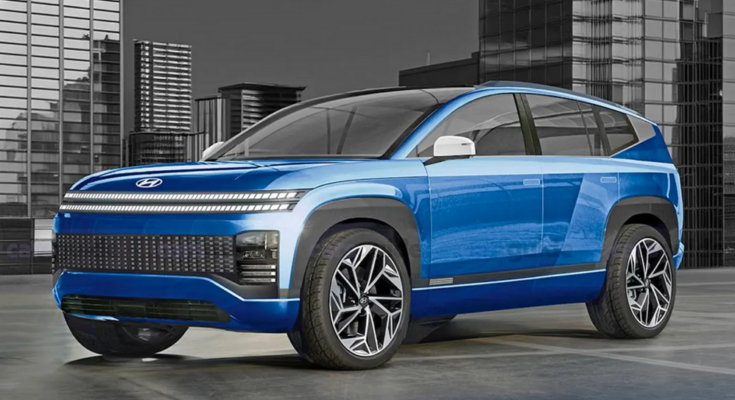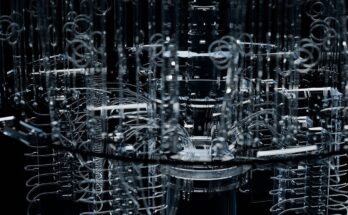Key Takeaways
- Hyundai has released Ioniq 9 teaser photos.
- It’s a big SUV with three rows that looks a lot like the Seven Concept.
- In November, it will make its formal premiere at the LA Auto Show.
Ahead of its November launch, Hyundai has released the first teaser photographs of the Ioniq 9, its first three-row electric SUV, which may be the company’s most significant EV to date.
The first look displays the “Aerosthetic” design in production, which debuted with the Seven concept in 2021. This implies that the final EV will feature a combination of sleek curves and a nearly flat rear, though specifics will have to wait.
According to Hyundai, the Ioniq 9 will feature a lengthy wheelbase and “enough space” for all passengers, particularly those who usually suffer in the third row. The distinctive pixel-like headlights and taillights of the Ioniq range are to be expected.
The big EV’s camouflaged prototypes have been seen on the road. It is anticipated to have a range of at least 300 miles, be around the same size as Kia’s EV9, support native Tesla Superchargers, and start at about $55,000 before tax credits. Together with the updated Ioniq 5, Hyundai will manufacture the SUV at its new facility in Georgia.
Prior to the Ioniq 9’s debut at the Los Angeles Auto Show next month, Hyundai has promised a steady drip of additional information.
Hyundai’s electric vehicle plan may depend heavily on the Ioniq 9. Although the Ioniq 5 and 6 have garnered positive reviews, their crossover and sedan models have restricted their market reach. Apart from that, Kia models—from the well-liked EV6 and EV9 to the small EV3, which will have debuted in Europe and South Korea by the end of 2024—have been a major contributor to the auto giant’s success.
This is Hyundai’s first electric version of the Palisade and their biggest self-branded EV. Additionally, it is essential for a North American market that is dominated by three-row SUVs, such as the Kia Telluride, Hyundai’s Santa Fe, and Palisade. Theoretically, the Ioniq 9 will demonstrate that EVs are feasible for some of the biggest gas-guzzling vehicles and strengthen Hyundai’s commitment to EVs.


